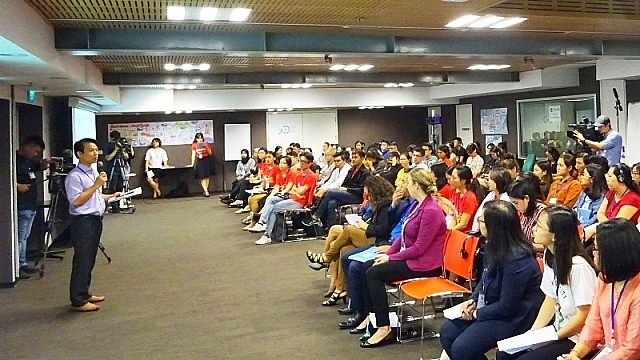ASEAN youngsters seek ways to end gender violence, promote equality
 |
| The dialogue in Hanoi on October 10 attracted youth representatives from 10 ASEAN countries (Photo: nhandan.com.vn) |
The wider dialogue closed a five-day training course on the role of youth in ensuring gender equality, which had 24 participants from ASEAN countries, including six from Vietnam.
The course aimed to provide trainees with information on gender violence, allowing them to become more confident in implementing initiatives to promote gender equality and end gender violence in the community.
Nguyen Hai Minh, Vice President of the Vietnam Youth Federation, said that Vietnam is currently under a “golden demographic period”, with one third of the population aged between 15 and 24 years.
This is the ideal time to change the values and standards regarding gender and gender equality, he said, holding that working with youngsters is a good way to create positive social norms, preventing and ending violence against women and girls.
Education, including non-official approaches that target youth, is the most effective solution to preventing violence and developing relationships based on mutual respect, stated Minh.
Minh also expressed his hope that participants will help to form action plans and give effective initiatives, ideas, and measures to strengthen collaboration amongst ASEAN youngsters.
Furthermore, it is necessary to enhance the engagement of ASEAN youngsters in promoting gender equality, as well as putting an end to violence against women and girls in the future, he added.
Elisa Fernandez, head of the UN’s Entity for Gender Equality and the Empowerment of Women (UN Women) Office in Vietnam, said that the 24 course trainees had a chance to discuss the meaning and origin of gender equality, thus seeking ideas to erase gender inequality.
The “change makers” provided trainees with basic gender equality theories and gave them a chance to implement their own initiatives, she said. She revealed that 12 of the youngsters’ projects were chosen by UN Women for financial support during their implementation in ASEAN countries. These projects are expected to contribute to completing the fifth Sustainable Development Goal on gender equality and female empowerment by 2030.
What the stars mean:
★ Poor ★ ★ Promising ★★★ Good ★★★★ Very good ★★★★★ Exceptional
Related Contents
Latest News
More News
- Protect what’s next: towards a future free from meningococcal group B disease (December 05, 2025 | 18:00)
- New ILO report offers policy recommendations for disability inclusion (December 04, 2025 | 15:18)
- Maternal job loss may affect children’s mental health, research shows (December 03, 2025 | 19:11)
- Women lead Vietnam’s shift to climate-resilient agriculture (December 03, 2025 | 19:10)
- Experts highlight unpaid care work as key barrier to gender equality (December 03, 2025 | 15:15)
- Opportunities and inequalities for women workers in Vietnam's garment industry (December 03, 2025 | 09:00)
- Vietjet flights carry love to devastated central region (November 28, 2025 | 11:35)
- New initiative to boost the fight against domestic violence (November 26, 2025 | 10:00)
- South Korea funds IOM relief for Vietnam’s typhoon-affected communities (November 24, 2025 | 15:33)
- AI and human-centred values set to shape the future of HR in Vietnam (November 21, 2025 | 18:04)

 Tag:
Tag:





















 Mobile Version
Mobile Version